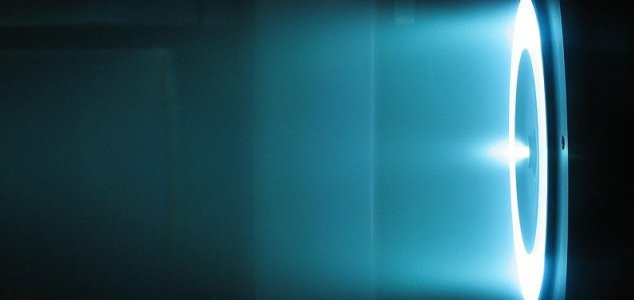Space & Astronomy
October 21, 2017 · 12 comments
12 comments

Iron thrusters are much more energy efficient than chemical rockets. Image Credit: NASA / JPL-Caltech
During a recent demonstration of the X3 at NASA's Glenn Research Center in Ohio, scientists managed to break multiple world records for power output, operating current and thrust.
"We have shown that X3 can operate at over 100 kW of power," said project leader Alec Gallimore.
"It operated at a huge range of power from 5 kW to 102 kW, with electrical current of up to 260 amperes. It generated 5.4 Newtons of thrust, which is the highest level of thrust achieved by any plasma thruster to date."
While ion thrusters are more energy efficient and can achieve much higher speeds than chemical rockets, they have much lower acceleration and therefore take a lot longer to get up to speed.
"You can think of electric propulsion as having 10 times the miles per gallon compared to chemical propulsion," said Gallimore. "Chemical propulsion systems can generate millions of kilowatts of power, while the existing electrical systems only achieve 3 to 4 kilowatts."
"What we would need for human exploration is a system that can process something like 500,000 watts (500 kW), or even a million watts or more."
"That's something like 20, 30 or even 40 times the power of conventional electric propulsion systems."
Source: Space.com | Comments (12)
NASA's ion thruster breaks propulsion records
By T.K. RandallOctober 21, 2017 ·
 12 comments
12 comments
Iron thrusters are much more energy efficient than chemical rockets. Image Credit: NASA / JPL-Caltech
The prototype thruster could one day propel the first Mars astronauts all the way to the Red Planet.
Designed through a collaboration between the University of Michigan, NASA and the US Air Force, the X3 thruster works by accelerating a stream of electrically charged atoms to produce thrust.During a recent demonstration of the X3 at NASA's Glenn Research Center in Ohio, scientists managed to break multiple world records for power output, operating current and thrust.
"We have shown that X3 can operate at over 100 kW of power," said project leader Alec Gallimore.
"It operated at a huge range of power from 5 kW to 102 kW, with electrical current of up to 260 amperes. It generated 5.4 Newtons of thrust, which is the highest level of thrust achieved by any plasma thruster to date."
"You can think of electric propulsion as having 10 times the miles per gallon compared to chemical propulsion," said Gallimore. "Chemical propulsion systems can generate millions of kilowatts of power, while the existing electrical systems only achieve 3 to 4 kilowatts."
"What we would need for human exploration is a system that can process something like 500,000 watts (500 kW), or even a million watts or more."
"That's something like 20, 30 or even 40 times the power of conventional electric propulsion systems."
Source: Space.com | Comments (12)

The Unexplained Mysteries
Book of Weird News
AVAILABLE NOW
Take a walk on the weird side with this compilation of some of the weirdest stories ever to grace the pages of a newspaper.
Click here to learn more

Support us on Patreon
BONUS CONTENTFor less than the cost of a cup of coffee, you can gain access to a wide range of exclusive perks including our popular 'Lost Ghost Stories' series.
Click here to learn more
Extraterrestrial Life and The UFO Phenomenon
Palaeontology, Archaeology and History
Other World News
United States and the Americas
Total Posts: 7,751,570 Topics: 324,008 Members: 203,511
Not a member yet ? Click here to join - registration is free and only takes a moment!
Not a member yet ? Click here to join - registration is free and only takes a moment!





























Please Login or Register to post a comment.